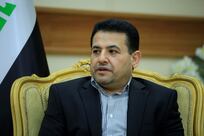Qatar’s trade surplus shrank in December as the value of its exports – almost entirely natural gas and oil – fell by 21.9 per cent compared to a year earlier, while imports continued to grow.
The monthly trade report from Qatar’s ministry of development planning and statistics showed that exports in December were valued at 33.8 billion Qatari riyals (Dh34.09bn), down from 43.2bn riyals a year earlier.
Imports, meanwhile, were 18 per cent higher at 11bn riyals.
That left Qatar’s trade surplus in December at 22.7bn riyals, down about 33 per cent on the year.
The gas-rich country – which is the world’s largest exporter of liquefied natural gas and holder of the fourth largest natural gas reserves – has taken a hit from the sharp decline in oil prices in recent months as its gas exports, mainly to Asian buyers, are linked to oil prices.
The world benchmark North Sea Brent crude averaged US$69.40 last December, down 37 per cent from the previous December’s average of $110.70.
The Arabian Gulf country’s trade surplus ballooned from 2006 when it began to ramp up LNG exports, with exports growing at an average annual rate of 19 per cent through 2012, while imports grew at an average rate of 2.5 per cent a year during the period, according to data from the United Nations.
Although its financial position has deteriorated recently, Qatar is still in a good position to weather the decline in oil prices, at least in the short to medium term, according to Standard & Poor’s, the credit rating agency.
S&P analysts kept their sovereign debt rating steady for Qatar at AA, even though they sharply lowered their expected average oil price for the next two years.
The hydrocarbons sector creates about 55 per cent of Qatar’s GDP, but 90 per cent of government revenue and 85 per cent of export revenue is derived from the sector.
The country’s huge accumulated wealth will support the economy in the next two years, but S&P worried about the longer term, especially given the rapid belt-tightening expected by the government.
“Qatar is a wealthy economy...but we view [it] as undiversified,” wrote the S&P analysts Trevor Cullinan and Nourredine Lafhel.
Their report noted: “We believe that reducing government expenditure growth this sharply could prove difficult to achieve in light of the government’s plans to implement a capital investment programme of about 15 per cent of GDP each year over the next five years as part of its national development strategy, largely funded through the budget.”
The austerity has already been felt in the oil and gas sector as Qatar Petroleum, the national oil company, cancelled projects, including a planned petrochemicals plant with partner Royal Dutch Shell.
amcauley@thenational.ae
Follow The National's Business section on Twitter




